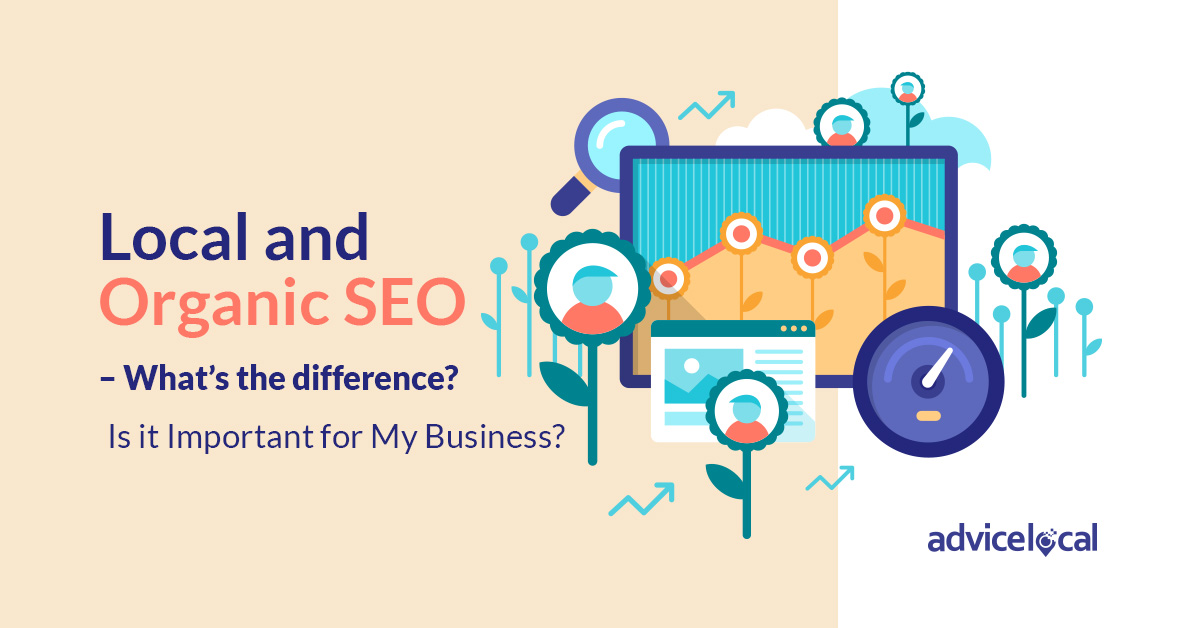Looking to reach more customers in your area? Local and organic SEO are both important for your business.
Once upon a time, a business could purchase an ad in the newspaper or Yellow Pages and customers would start coming in. Remember those days?
Well times have changed…
With so many new aged marketing techniques—think social media, SEO, sales funnels, Google ads, Facebook ads, email marketing, retargeting display ads, and so much more—the list is virtually endless!
What Type of Marketing is Important Today
If you’re a local business aiming to reach customers in your area, you need to be following local SEO best practices.
Why?
Because when done properly, you’ll have greater exposure than any newspaper ad could do for you.
In today’s world, people search Google Maps for businesses in their area, either through their smartphone or computer. In fact, smartphone usage increases every year, with more than 50% of mobile searches having local intent.
You’re leaving money on the table if you don’t focus your efforts on getting to the top of Google Maps. This can be accomplished with local SEO.
Okay, You’ve Heard of SEO – What’s the Difference between Local and Organic?
When you do a search on Google and it has local intent (think of a restaurant in your area), there are three types of search results that show: organic, local and Google Ads.
Organic search results (URL and description) are shown when you type in a keyword on Google. Organic SEO is the process of optimizing your website to rank for targeted keywords.
Local search are the results that appear on Google Maps. Whether you’re searching under “Web” or “Maps,” Google lists the name of business, address, phone number, website and reviews—so long as your search has local intent (i.e. auto shop, Mexican restaurant).
Google favors an optimized Google Business Profile (versus not having one at all) and will reward you for filling out all of your information correctly. That includes making sure you NAP (name, address, phone number) are consistent from your website to Google Maps to all your social profiles. So in short, local SEO involves optimizing your Google Business Profile (formerly Google My Business).
How to Optimize Your Google Business Profile Page
First, make sure your Google Business Profile is claimed. Go to http://www.google.com/business/ to get started.
Once you go through the steps, I recommend you verify your information and make sure EVERYTHING is on there – your name, phone number, hours, photos, introduction and anything else to complete your profile 100%. You’ll get brownie points from Google and stand apart from the competition.
If you ever have any trouble through the process give them a call. Every time I’ve called to verify a business, they’ve been incredibly helpful and friendly.
3 Things Google Will Consider to Rank Your Business
Once you get your Google Business Profile page taken care of, there’s more you want to do to get reign supreme in local search.
Three important factors Google takes into account:
- Geographical location – Where your business is located and how close it is to where the consumer is searching.
- Reviews and ratings – Get those reviews up! The more you have, the higher you’ll rank. The better they are, the higher conversions you’ll get when people find you.
- Citations – Business listings or directories (like Yelp) that mention your business name, address and phone number. It’s vital to keep this information accurate and consistent across all of the directories you’re listed under.
The goal is to get your business contact info to the top of the search results, so more customers find you!
What’s important to you when you look for a local business in your area? How do you find them?



